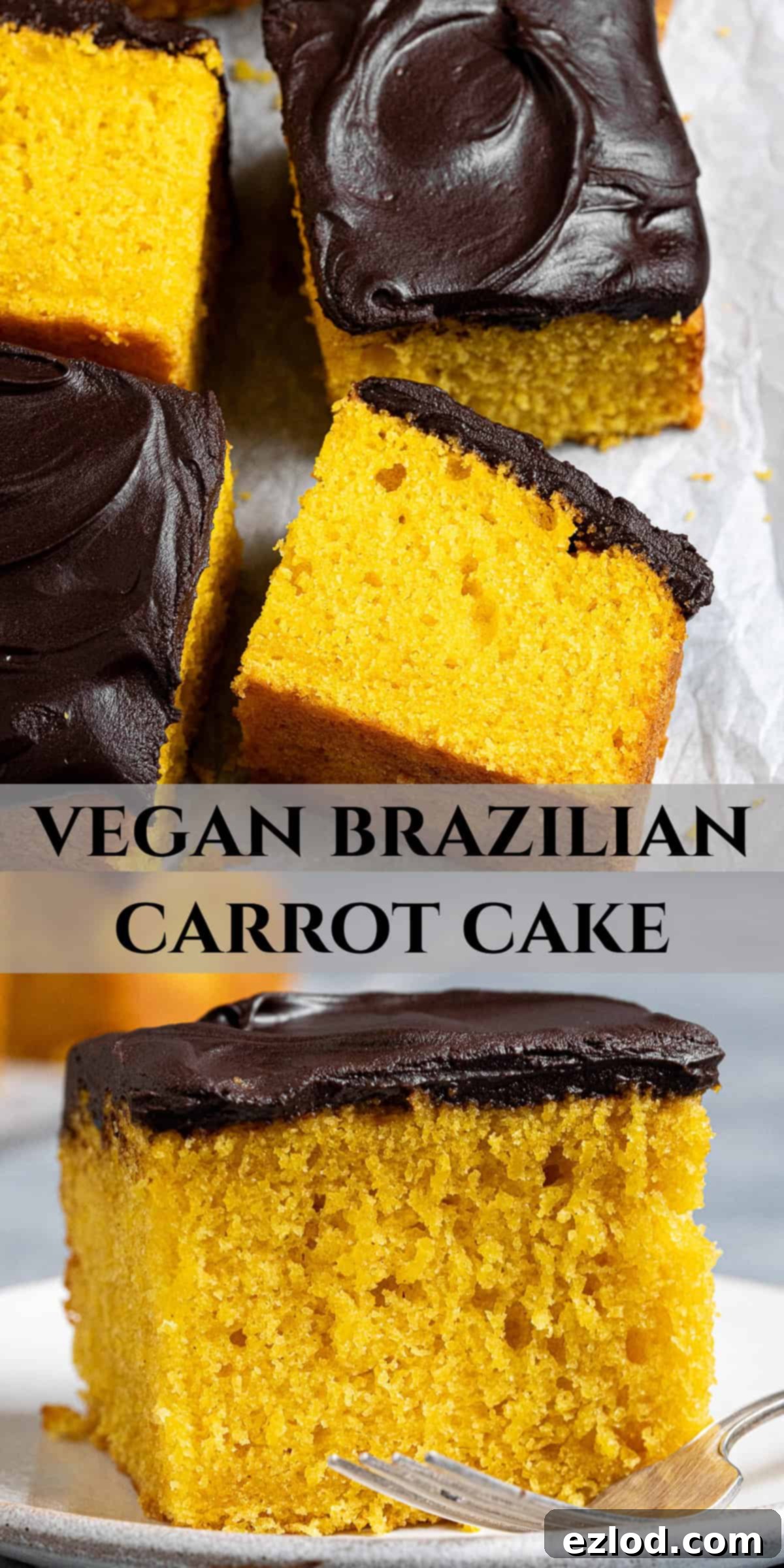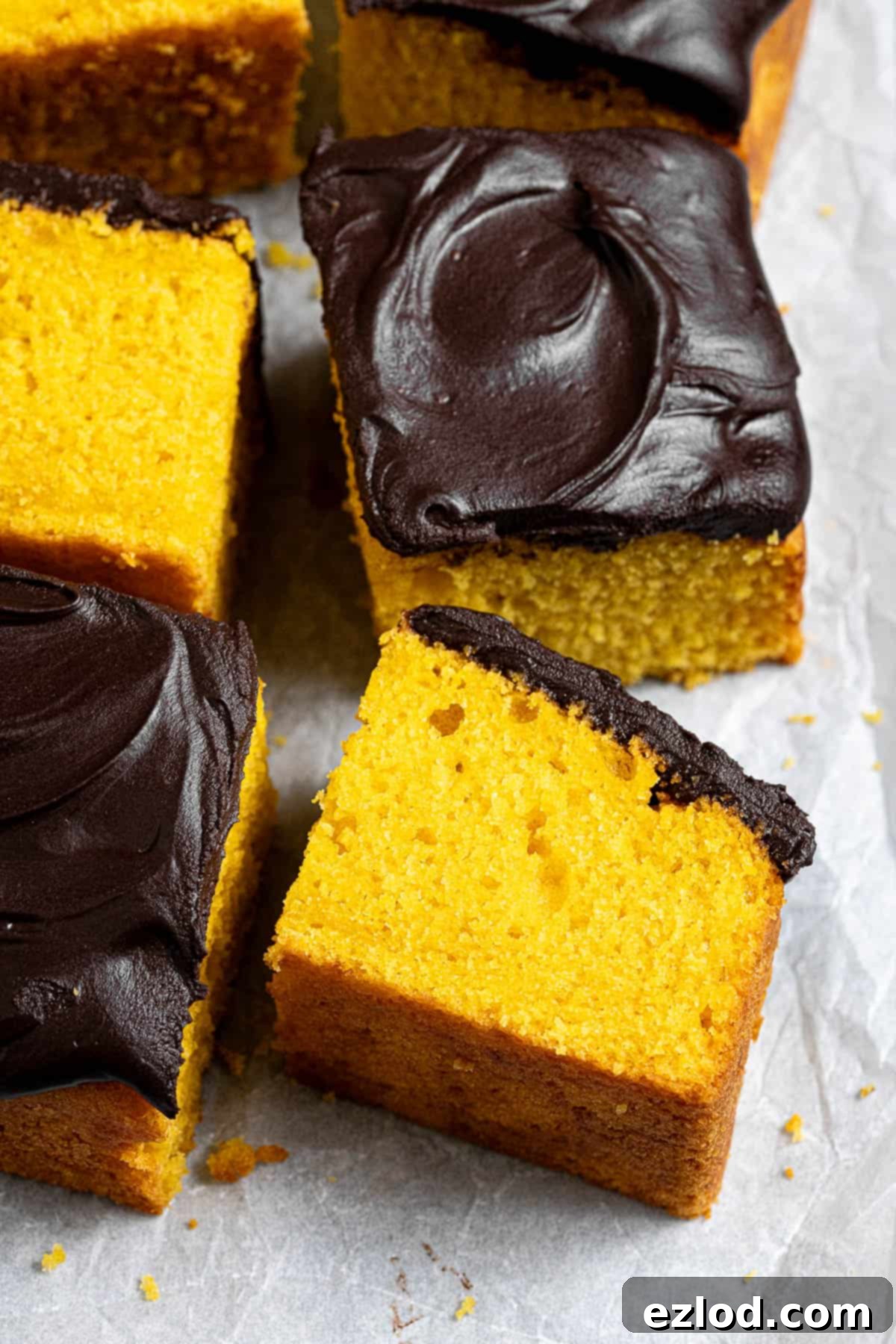Easy Vegan Brazilian Carrot Cake (Bolo de Cenoura) with Rich Chocolate Fudge Frosting
Discover the delightful taste of an authentic Vegan Brazilian Carrot Cake (Bolo de Cenoura), a recipe that promises a wonderfully moist, tender, and incredibly soft carrot sponge cake. Crowned with a luscious, rich chocolate fudge frosting, this dessert offers a unique and irresistible flavor profile that stands apart from its American counterpart. What’s even better? This mouthwatering plant-based cake is surprisingly quick and remarkably easy to prepare, especially since the clever use of a blender means absolutely no laborious grating of carrots is needed! Perfect for any occasion, from casual family desserts to impressive potluck contributions, this vegan treat is sure to become a new favorite in your repertoire.
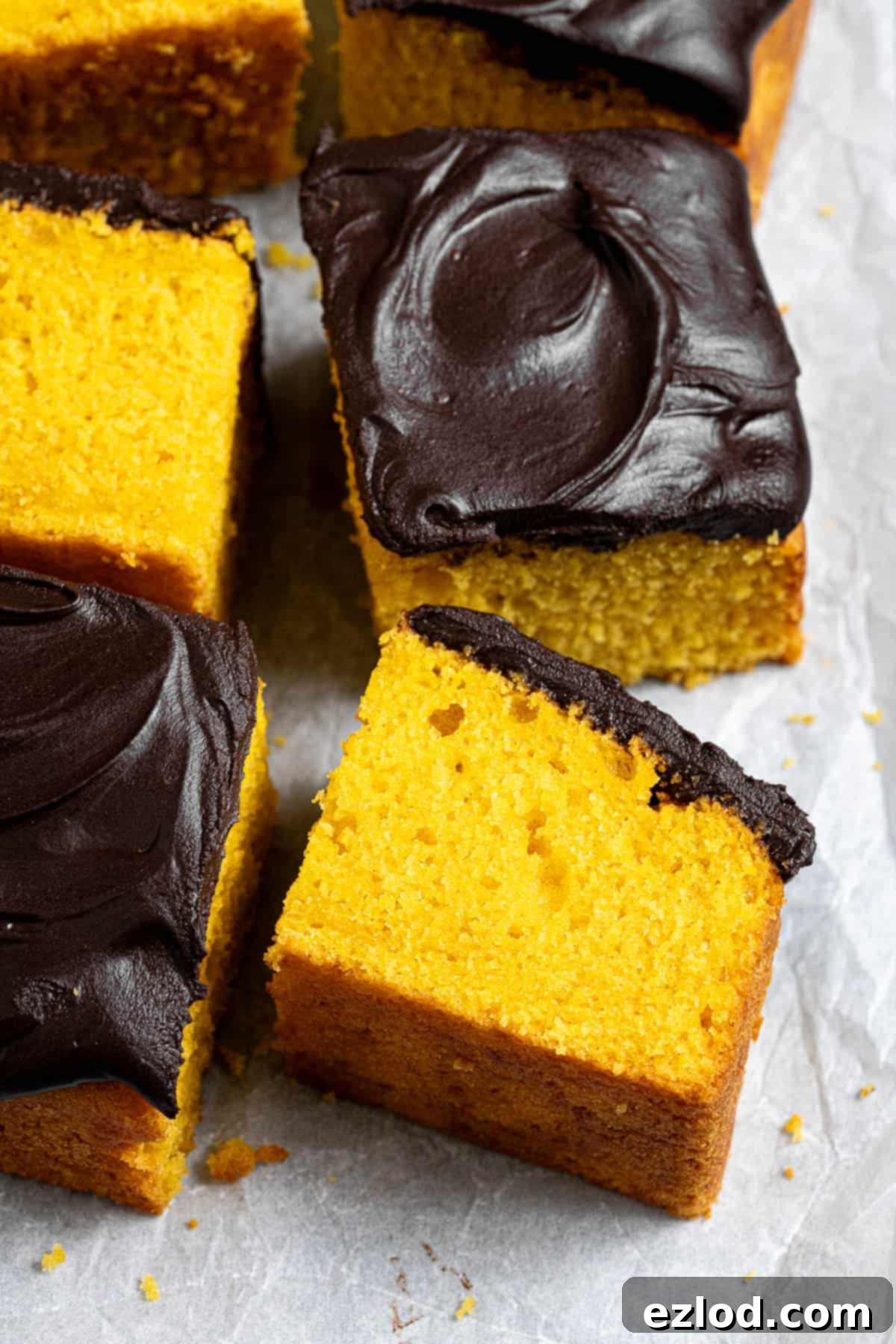
What Is Brazilian Carrot Cake?
If you’re accustomed to the spiced, cream-cheese-frosted American carrot cake, prepare for a delightful culinary surprise with the Brazilian version, known affectionately as Bolo de Cenoura. Unlike its North American cousin, traditional Brazilian carrot cake completely omits warming spices like cinnamon, nutmeg, or cloves, focusing instead on the pure, subtle sweetness of carrots. A key distinguishing factor is also the preparation of the carrots: instead of being laboriously grated, they are smoothly blended into the batter, contributing to an incredibly light, fluffy, and moist texture that truly melts in your mouth. And for the topping? Forget cream cheese; Brazilian carrot cake is traditionally adorned with a decadent chocolate frosting. As you can see, beyond the shared ingredient of carrots, these are entirely different cakes, each with its own distinct charm and character.
The blended carrots don’t just add moisture; they also infuse the cake with a beautiful, vibrant orange hue, making it as appealing to the eye as it is to the palate. The cake’s flavor is delicately sweet and wonderfully subtle, creating the perfect canvas for the rich chocolate topping. This makes it a fantastic option for those who prefer a less overtly spiced dessert. Traditionally, Bolo de Cenoura is topped with brigadeiro, a beloved Brazilian confection made from condensed milk and cocoa powder, cooked until thick and glossy. Other popular variations include a simple pourable chocolate sauce or a smooth, rich ganache.
For this vegan adaptation, finding readily available vegan condensed milk can sometimes be a challenge, and even when found, it can be quite expensive. That’s why I’ve opted for a luscious chocolate fudge frosting that hits the sweet spot perfectly—somewhere between a decadent ganache and a pourable chocolate sauce. This frosting offers a deep chocolate flavor and a wonderfully smooth, spreadable consistency that complements the moist carrot cake perfectly, ensuring a truly indulgent plant-based dessert experience that everyone will love.
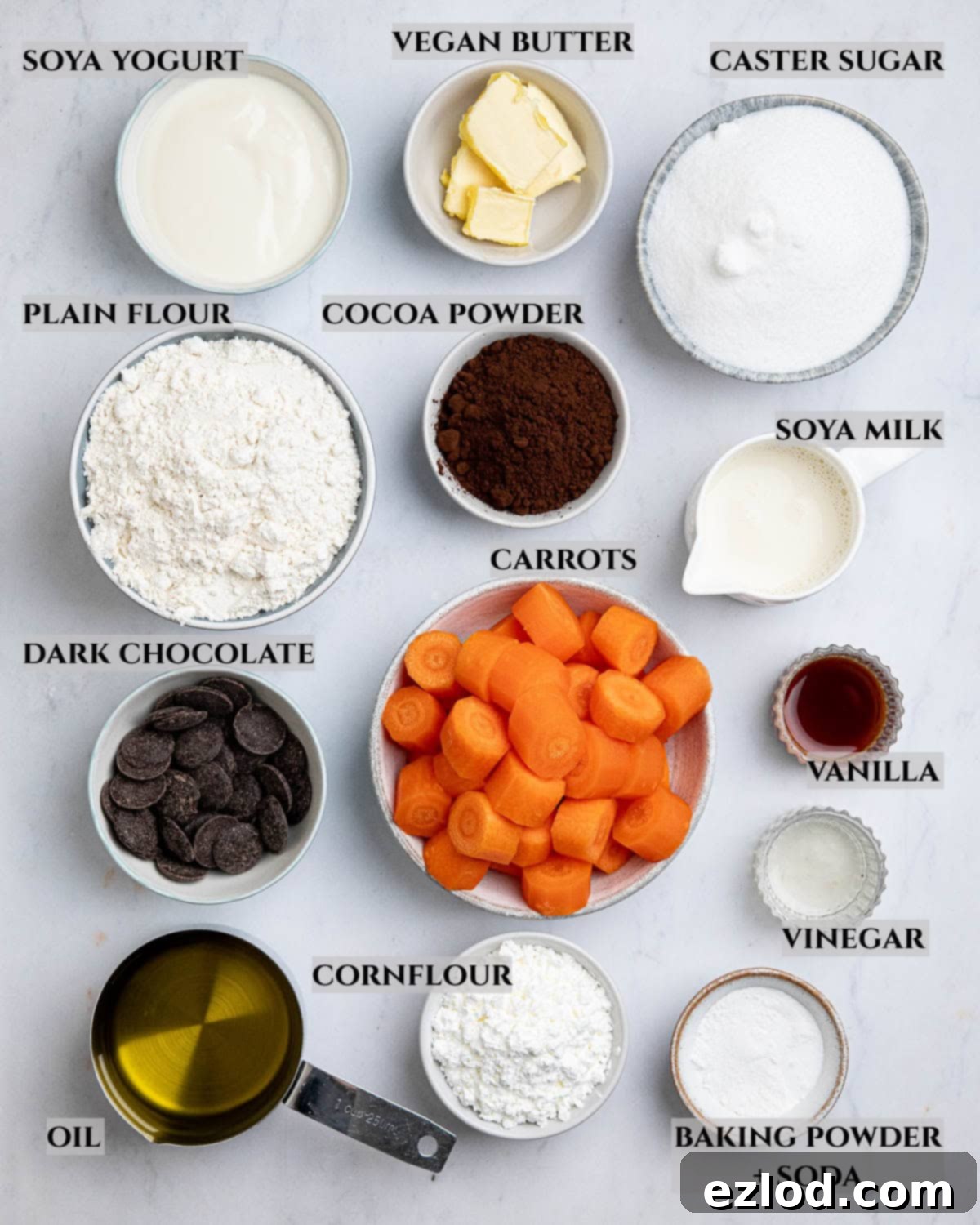
Ingredient Details:
Crafting the perfect Vegan Brazilian Carrot Cake relies on a thoughtful selection of ingredients. Here’s a closer look at what you’ll need and why each component plays a crucial role in achieving that signature moist and tender crumb, along with the rich, irresistible frosting.
- Carrots: The star of our cake! You’ll need fresh carrots, peeled and roughly chopped into chunks to make them easier for your blender to handle. The real beauty of this recipe is that a blender does all the hard work – absolutely no tedious grating required! Blending the carrots ensures they fully incorporate into the batter, lending a vibrant natural color and exceptional moisture without any fibrous bits or chunky texture.
- Non-Dairy Yogurt: A secret weapon in vegan baking! Plant-based yogurt acts as a phenomenal egg replacer, contributing significantly to the cake’s overall moistness and tender texture. It also adds a subtle tang that helps to balance the sweetness of the cake. I’ve personally had the best results with Greek-style soya yogurt due to its thicker consistency and more neutral flavor profile, but other soy or coconut yogurts should also work well. Unfortunately, I haven’t extensively tested substitutes for the yogurt, but a straight swap with plant milk might alter the cake’s delicate texture slightly, potentially making it less rich or moist.
- Olive Oil: I like to use olive oil for its subtle fruitiness and healthy fats, which contribute to a wonderfully rich crumb. However, you can swap it for another neutral-flavored vegetable oil if you prefer, such as sunflower, canola, or grapeseed oil. It’s crucial, however, to avoid using coconut oil in this recipe. Coconut oil solidifies at room temperature and can make the cake too dense and heavy, detracting from the desired light and airy Brazilian carrot cake texture.
- Sugar: Simple is best here. Use fine caster sugar or granulated sugar to achieve the correct sweetness and contribute to the cake’s fine crumb structure. Do not substitute with liquid sweeteners like maple syrup or agave nectar, or artificial sweeteners. These can drastically change the moisture balance and overall structure of the cake, leading to unpredictable results and a potentially gummy texture. The granular sugar helps create that delicate crumb.
- Vinegar: This seemingly small addition plays a vital chemical role in the leavening process. When combined with the bicarbonate of soda (baking soda), the acidity in the vinegar creates a powerful reaction, producing carbon dioxide bubbles. These bubbles are what help the cake rise beautifully and contribute significantly to its light, airy, and fluffy texture. Apple cider vinegar or white wine vinegar are excellent choices, or you can use an equal amount of fresh lemon juice instead.
- Plain Flour and Cornflour (Cornstarch): The combination of regular plain (all-purpose) flour and a touch of cornflour (known as cornstarch in the US) is key to developing a perfectly tender crumb. Cornflour helps to soften the gluten in the plain flour, resulting in a silkier, less dense cake that melts in your mouth. If you don’t have any cornflour on hand, you can substitute it with an equal weight of plain flour, but I do highly recommend including it for the best possible texture and a truly superior crumb.
- Baking Powder and Bicarbonate of Soda (Baking Soda): These two leavening agents work in tandem to ensure your cake rises perfectly and achieves its signature light texture. Baking powder provides initial lift, while bicarbonate of soda, when activated by the acidic ingredients in the batter (like yogurt and vinegar), creates additional lift and contributes to a fine, even crumb. Using both is essential for achieving the optimal rise and a wonderfully soft, airy texture in your cake.
For the rich chocolate fudge frosting, you will need a handful of staple ingredients to create our luscious topping: good quality dark chocolate for depth of flavor, unsweetened cocoa powder for intense chocolate richness, plant milk to achieve a creamy consistency, sugar for sweetness, and vegan block butter for added richness and a smooth texture. A touch of vanilla extract rounds out the flavors beautifully.
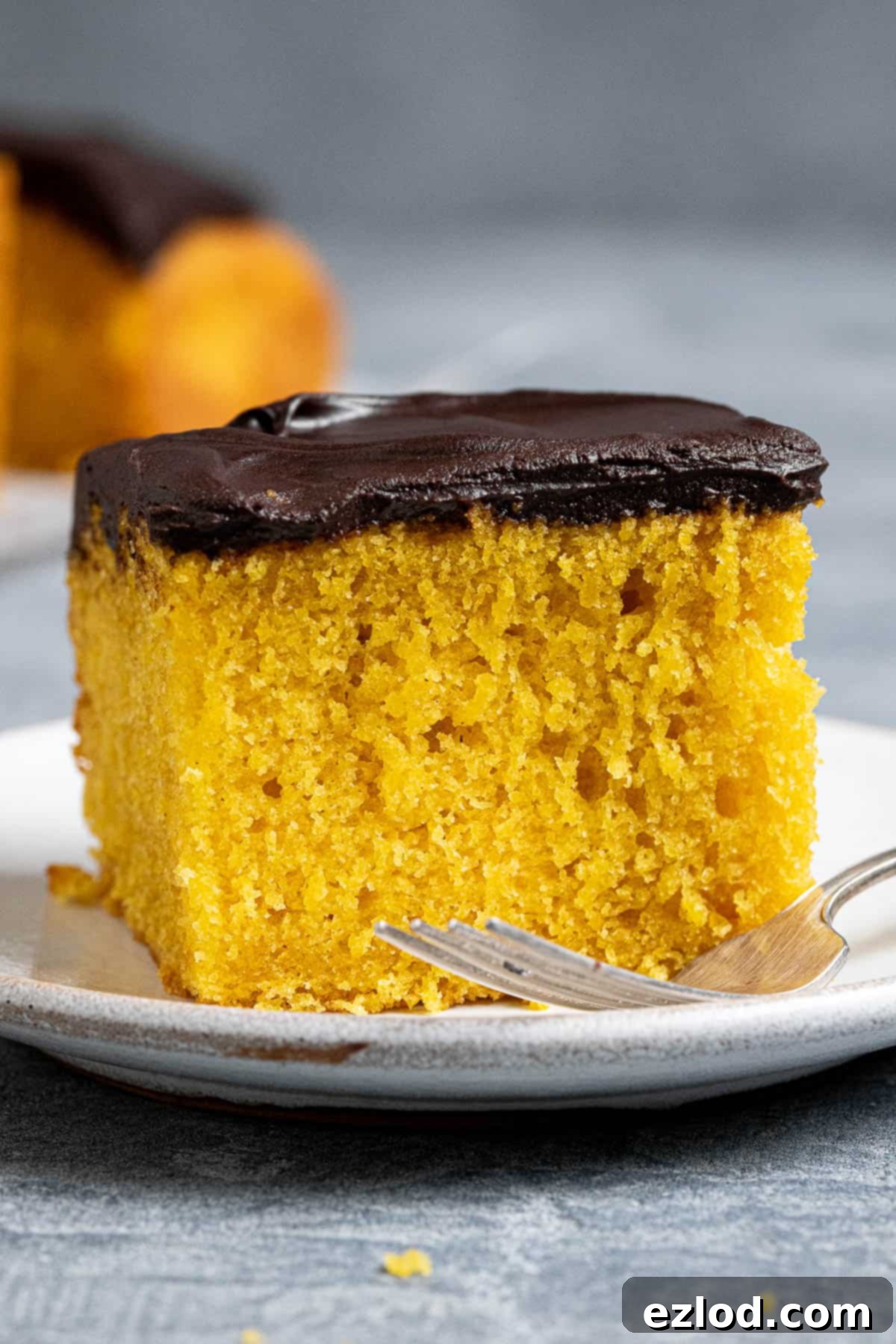
How To Make Vegan Brazilian Carrot Cake:
(Full measurements and detailed instructions can be found in the comprehensive recipe card at the bottom of the page)
Making this Vegan Brazilian Carrot Cake is a straightforward process, largely thanks to the blender doing most of the work for the cake batter. Follow these simple steps for a perfect bake every time, ensuring a moist, tender cake and a rich, smooth frosting:
- Step 1: Prepare the Wet Ingredients. Begin by preheating your oven to 180°C/160°C fan/350°F/gas mark 4. Then, line a 20 cm (8 inch) or 23 cm (9 inch) square cake tin with baking parchment, ensuring some overhang on the sides for easy removal. Next, take your roughly chopped carrots (weighed after peeling) and place them into a high-speed blender. Add the oil, sugar, non-dairy yogurt, vanilla extract, and vinegar. Blend the mixture thoroughly until it is completely smooth, with absolutely no visible lumps of carrot remaining. This step is crucial for achieving the cake’s signature smooth texture and vibrant color.
- Step 2: Combine Wet and Dry. Pour the beautifully blended, vibrant carrot mixture into a large mixing bowl. Using a balloon whisk, gently incorporate the cornflour, baking powder, bicarbonate of soda, and salt. Whisk until these dry ingredients are just combined with the wet mixture. Then, gradually add the plain flour, mixing carefully until the flour is fully integrated into the batter and no dry streaks remain. A critical tip here: avoid over-mixing! Over-beating the batter can develop the gluten in the flour too much, leading to a dense and chewy cake rather than the desired light, fluffy, and tender result.
- Step 3: Bake the Cake. Carefully pour the prepared batter into your lined cake tin, spreading it evenly with a spatula to ensure an even bake. Transfer the tin to the preheated oven and bake for approximately 30-40 minutes. The cake is done when it’s golden brown on top and a skewer inserted into the center comes out clean. Once baked, leave the cake to cool in the tin for about 10 minutes before carefully turning it out onto a wire cooling rack. Allow it to cool completely before proceeding to the next step. Ensuring the cake is fully cooled before frosting is essential to prevent your delicious chocolate fudge frosting from melting and sliding off.
- Step 4: Craft the Chocolate Fudge Frosting. While your cake cools, it’s time to prepare the star of the topping! In a medium saucepan, combine the unsweetened cocoa powder, plant milk, sugar, vegan block butter, vanilla extract, and a tiny pinch of salt. Place the pan over a low heat and whisk continuously until all the ingredients are melted and the mixture is smooth and cohesive. Once smooth, increase the heat slightly and bring the mixture to a gentle simmer, stirring occasionally to prevent sticking.
- Step 5: Finish the Frosting and Assemble. Remove the pan from the heat immediately after simmering. Add the finely chopped dark chocolate to the hot mixture and stir until it has completely melted and the frosting is silky smooth and glossy. Set the frosting aside to cool. As it cools, it will naturally thicken and firm up to a wonderfully spreadable consistency. If you leave it too long and it sets too firm, simply place the pan over a very low heat for a few seconds whilst continuously stirring, and it will become beautifully spreadable again. Once your cake is completely cool and the frosting is at the right consistency, use a palette knife or spatula to generously spread the rich chocolate fudge frosting evenly over the top of the cake. Slice, serve, and enjoy your stunning Vegan Brazilian Carrot Cake!
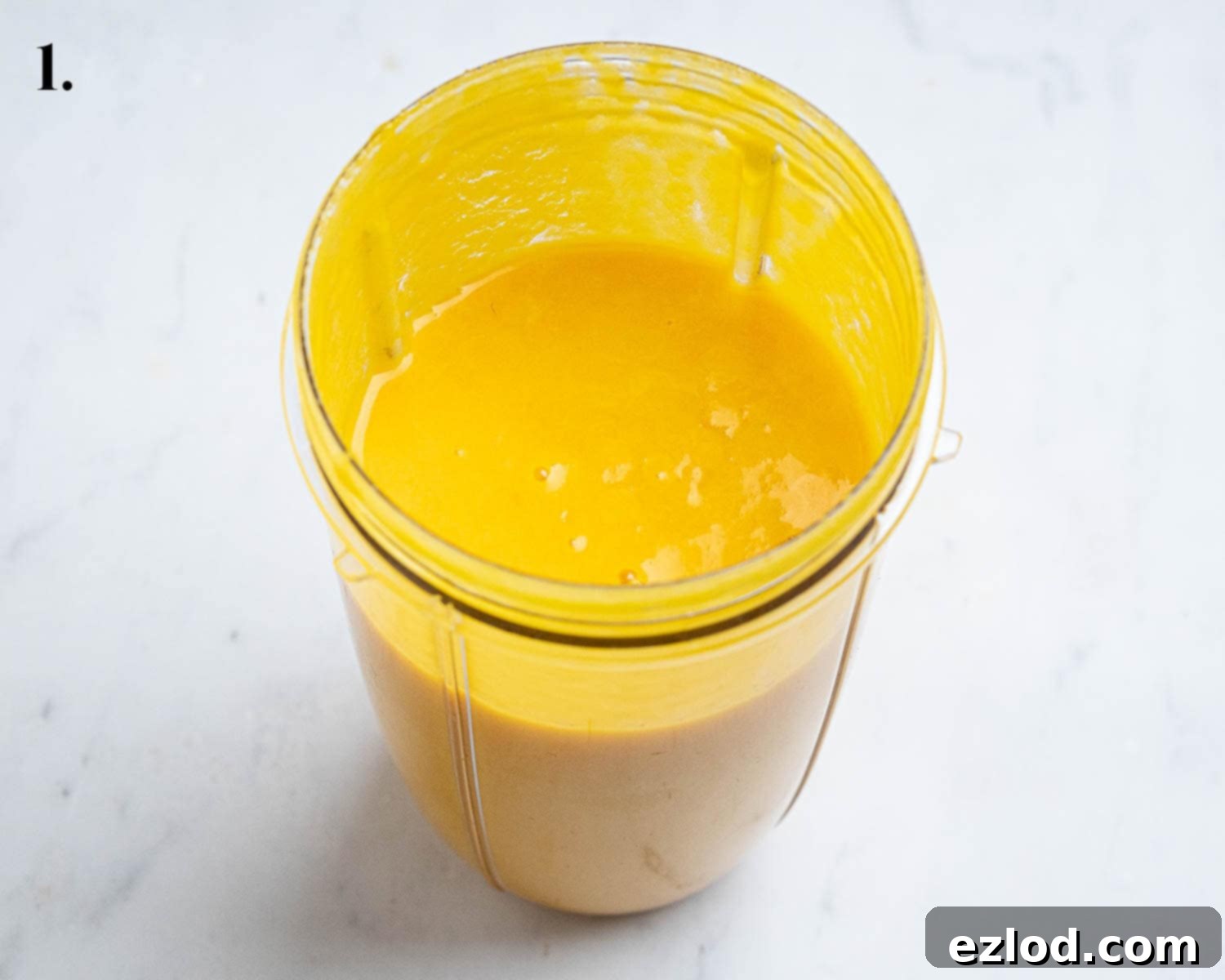
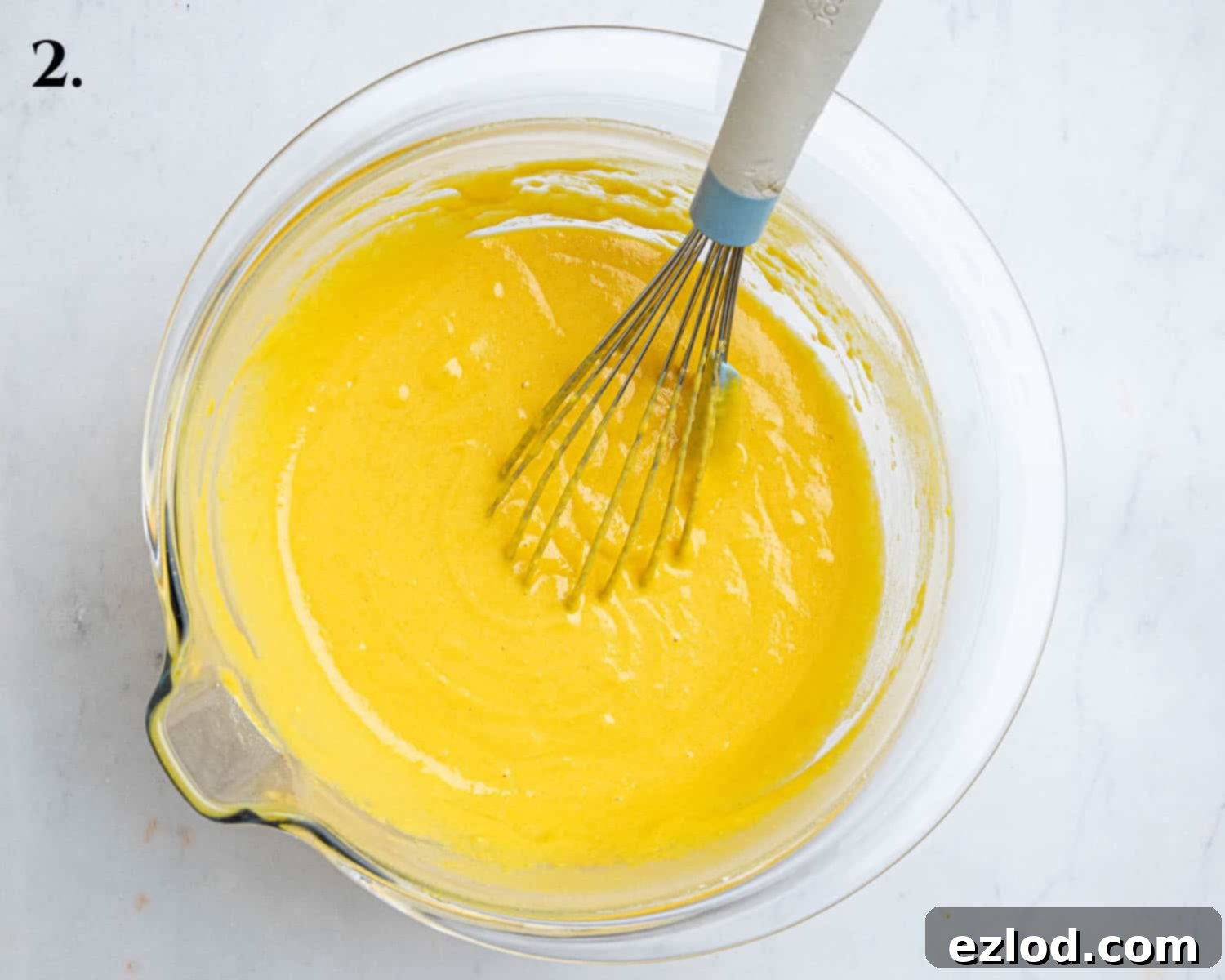
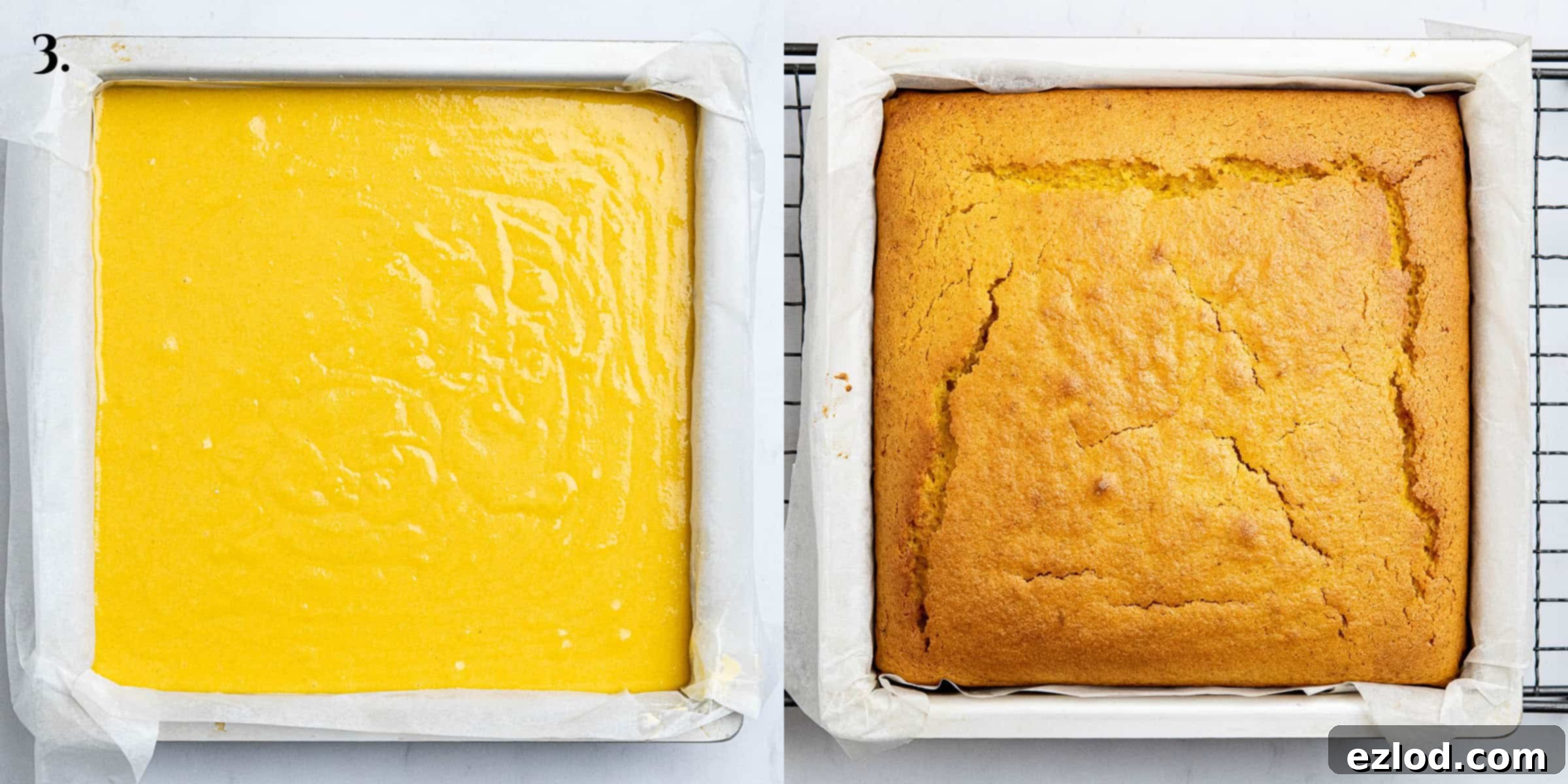
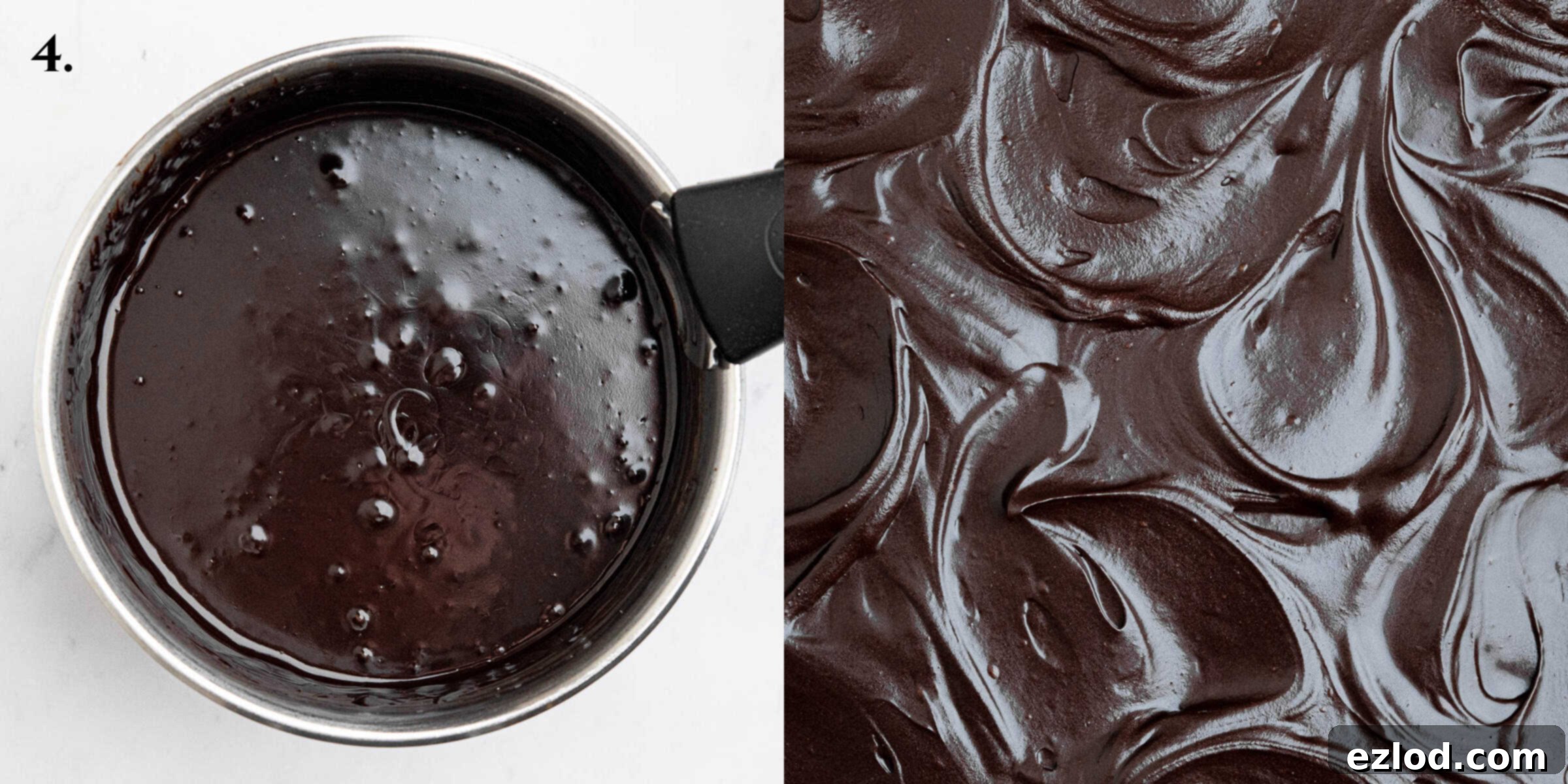
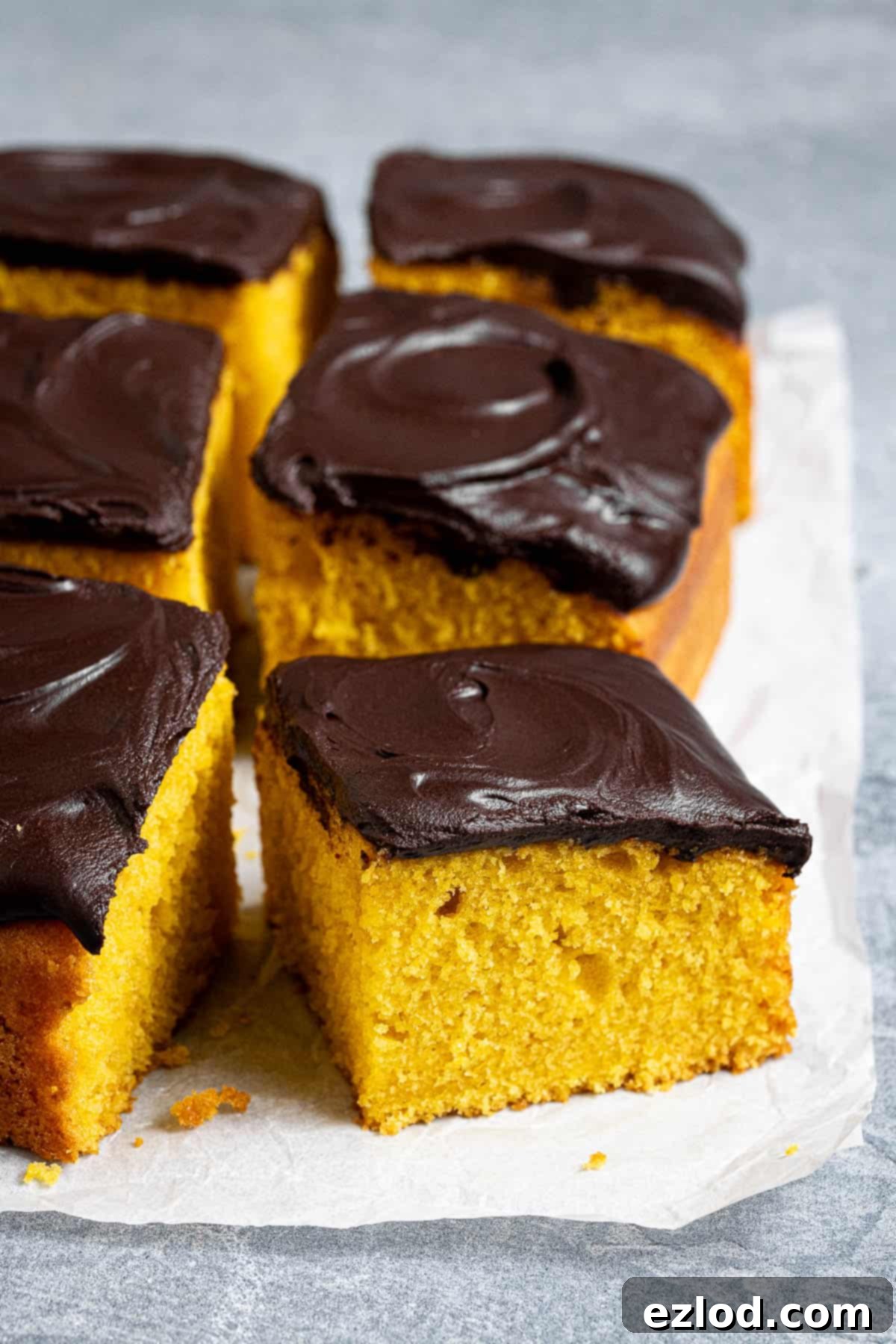
Top Tips:
Achieving bakery-quality results with your Vegan Brazilian Carrot Cake is easy if you follow these expert tips and tricks:
- Precision is Key: USE SCALES. This is arguably the most important tip for consistent baking success. While cup measurements are common, they are notoriously inaccurate and can vary greatly depending on how ingredients are packed or leveled. For truly reliable and repeatable results, I strongly recommend using metric measurements with a digital kitchen scale for all dry ingredients and liquids. Not only does it ensure accuracy, but it’s also generally quicker and less messy than using multiple measuring cups!
- Standard Measuring Spoons Only. When a recipe calls for tablespoons or teaspoons, always use standard measuring spoons. These are specifically calibrated volumes (15ml for a tablespoon, 5ml for a teaspoon), unlike regular kitchen spoons, which vary widely in size. Ensure your measurements are level, not heaped, for precision in your recipe.
- Accurate Carrot Weight Matters. The recipe calls for 300g of peeled carrots. It’s absolutely crucial to weigh them after peeling and roughly chopping them. Being significantly under or over this specific weight can affect the moisture content and overall texture of your cake, leading to a less-than-perfect crumb that might be too dry or too wet.
- Blend Wet, Fold Dry. Crucially, only blend the liquid ingredients and carrots in your blender. Do not add the flour or other dry leavening agents (like baking powder/soda) to the blender. The flour should be gently folded into the blended wet mixture by hand using a whisk or spatula. Over-mixing flour, especially with a powerful blender, develops too much gluten, which will result in a dense, chewy cake instead of the desired light and fluffy texture.
- Cake Tin Size Impact. This recipe is designed for a 20 cm (8 inch) square cake tin, which yields a nice height. However, a 23 cm (9 inch) square tin will also work beautifully. Just keep in mind that using a larger tin will result in a slightly thinner cake, which means it might bake a little quicker. Always perform the skewer test to check for doneness, regardless of the tin size.
- Embrace Cooling Time. Patience is a virtue, especially in baking! Ensure your cake is completely cooled before you even think about applying the frosting. Trying to frost a warm cake will cause your delicious chocolate fudge frosting to melt, slide right off, and create a messy presentation, not to mention impacting the frosting’s texture.
- Frosting Consistency is Key. The chocolate fudge frosting needs to cool and firm up slightly to achieve the perfect spreadable consistency. If it becomes too thick or firm to work with, don’t despair! A quick return to very low heat for just a few seconds while continuously stirring will bring it back to life. Conversely, if it seems a little too thin even after cooling, let it cool for a bit longer, perhaps even in the fridge for 10-15 minutes, stirring occasionally, until it reaches the desired consistency.
- Frosting Alternatives. While our rich chocolate fudge frosting is incredible and highly recommended, you can also experiment with other toppings if you prefer. A simple chocolate ganache, made with just dark chocolate and warm plant cream or milk, offers a glossier, slightly thinner finish. Alternatively, if you can find or manage to make vegan condensed milk, a traditional vegan brigadeiro frosting would be a fantastic, authentic, and incredibly indulgent choice!
FAQ’s:
To maintain its freshness and incredible texture, store your Vegan Brazilian Carrot Cake in an airtight container at room temperature for up to 2-3 days. If you prefer it slightly firmer or need to extend its shelf life, it can be kept in the refrigerator for up to 5 days. Just be sure to bring it back to room temperature for at least 30 minutes before serving for optimal enjoyment of its moist crumb and soft frosting.
Yes, absolutely! This cake freezes exceptionally well, making it perfect for meal prep or enjoying a slice whenever a craving strikes. For the best results, I highly recommend freezing the cake before adding the chocolate fudge frosting. Once the cake has cooled completely, wrap it tightly in multiple layers of plastic wrap and then aluminum foil to prevent freezer burn. It can be frozen for up to 3 months. When you’re ready to enjoy it, simply allow it to defrost at room temperature for several hours or overnight, then prepare and add the frosting just before serving for a freshly delicious experience.
Many people are surprised by this! Unlike some heavily spiced American carrot cakes where the carrot flavor is very prominent, the taste of carrot in this Brazilian version is remarkably subtle. It functions more as a natural sweetener, a source of incredible moisture, and the provider of that beautiful bright orange-yellow color. Ultimately, it tastes more like an elevated, incredibly moist vanilla cake with a delicate, understated sweetness, beautifully complemented by the rich chocolate fudge frosting rather than an overpowering carrot taste.
This specific recipe, as written, is not gluten-free as it uses plain (all-purpose) wheat flour. While some vegan cakes can be adapted to be gluten-free, substituting gluten-free flour blends in baking, especially for cakes that rely on specific textures, can be quite tricky. Gluten-free flours often absorb liquids differently and may require additional binders like xanthan gum to achieve a similar structure. If you wish to make a gluten-free version, I recommend using a high-quality, pre-mixed gluten-free all-purpose baking blend that explicitly states it can be used for cakes, and possibly adjusting the liquid content slightly, though results may vary from the original recipe.
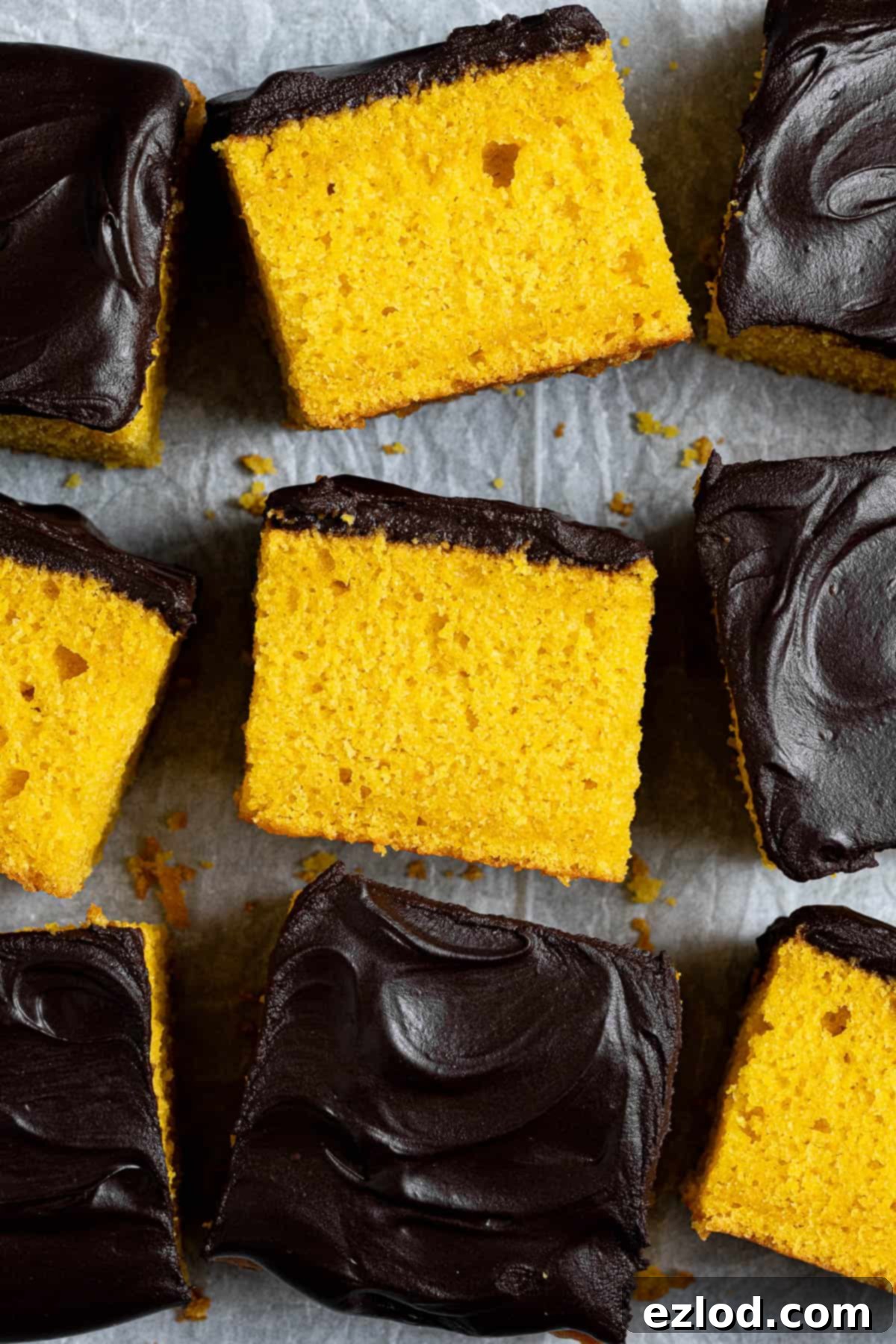
If you tried this delightful Vegan Brazilian Carrot Cake recipe, let me know how it went! Please take a moment to rate it, leave a comment below with your feedback, or tag @domestic_gothess on Instagram and hashtag it #domesticgothess. Your reviews and photos are always appreciated!
All images and content on Domestic Gothess are copyright protected. If you want to share this recipe then please do so by using the share buttons provided on the page. Do not screenshot or post the recipe or content in full, instead include a clear link to this post for the recipe to respect copyright and support my work. Thank you!

Print
Vegan Brazilian Carrot Cake (Bolo De Cenoura)
Ingredients
Cake:
- 300 g (peeled weight) carrots roughly chopped
- 145 g (160 ml/⅔ cup) neutral oil (I use olive, do not use coconut)
- 225 g (1 cup + 2 Tablespoons) caster or granulated sugar
- 80 g (⅓ cup) Greek style soya yogurt
- 2 teaspoons vanilla extract
- 1 ½ teaspoons vinegar
- 50 g (5 packed Tablespoons) cornflour (cornstarch)
- 2 ½ teaspoons baking powder
- ¼ teaspoon bicarbonate of soda (baking soda)
- ¼ teaspoon salt
- 270 g (2 ¼ cups) plain (all-purpose) flour
Chocolate Fudge Frosting:
- 30 g (⅓ cup) cocoa powder
- 80 g (6 Tablespoons) caster or granulated sugar
- 180 g (¾ cup) unsweetened non-dairy milk (I use soy)
- 30 g (2 Tablespoons) vegan block butter
- 1 teaspoon vanilla extract
- 125 g (4 ½ oz) dark chocolate finely chopped
Instructions
-
Preheat the oven to 180°C/160°C fan/350°F/gas mark 4. Line a 20 cm/8 in square cake tin with baking parchment.
-
Place the roughly chopped carrots in a blender along with the oil, sugar, yogurt, vanilla extract and vinegar. Blend until completely smooth, with no lumps of carrot.300 g (peeled weight) carrots, 145 g (160 ml/⅔ cup) neutral oil (I use olive, do not use coconut), 225 g (1 cup + 2 Tablespoons) caster or granulated sugar, 80 g (⅓ cup) Greek style soya yogurt, 2 teaspoons vanilla extract, 1 ½ teaspoons vinegar
-
Pour the blended mixture into a large bowl and use a balloon whisk to whisk in the cornflour, baking powder, bicarbonate of soda and salt, followed by the plain flour. Be careful not to over-beat the batter, stop mixing as soon as it is fully combined.50 g (5 packed Tablespoons) cornflour (cornstarch), 2 ½ teaspoons baking powder, ¼ teaspoon bicarbonate of soda (baking soda), ¼ teaspoon salt, 270 g (2 ¼ cups) plain (all-purpose) flour
-
Pour the batter into the prepared tin and spread it level. Bake for 30-40 minutes until a skewer inserted into the centre comes out clean. Leave the cake to cool in the tin for 10 minutes then carefully turn it out onto a wire cooling rack and leave to cool completely.
-
Once the cake has cooled make the frosting. Place the cocoa powder, milk, sugar, butter, vanilla extract and a pinch of salt in a pan over a low heat. Whisk until melted and smooth then bring up to a simmer.30 g (⅓ cup) cocoa powder, 80 g (6 Tablespoons) caster or granulated sugar, 180 g (¾ cup) unsweetened non-dairy milk (I use soy), 30 g (2 Tablespoons) vegan block butter, 1 teaspoon vanilla extract
-
Remove the pan from the heat and add the chocolate, stir until melted then set aside to cool and firm up to a spreadable consistency before using a palette knife to spread it over the cake. If you leave it too long and it sets too firm, simply place the pan over a low heat for a few seconds whilst stirring and it will become spreadable again.125 g (4 ½ oz) dark chocolate
Notes
- Please refer to the detailed post above for extensive tips, ingredient details, and step-by-step photos that will guide you through the entire baking process for the best results.
- USE SCALES. As with all of my baking recipes, I really do strongly recommend using the metric measurements with a digital kitchen scale rather than relying on cup conversions. Cups are a wildly inaccurate measuring system and you will consistently achieve far better, more reliable results using a scale, not to mention that it is often easier and less messy than using multiple measuring cups!
- I use a 20 cm (8 in) square cake tin for this recipe, but a 23 cm (9 in) tin will also work perfectly fine. Just be aware that if you use the larger tin, the cake may bake slightly quicker as it will be thinner, so keep a close eye on it towards the end of the baking time.
- For an alternative topping, you could use a simple chocolate ganache or a homemade vegan brigadeiro if you prefer a more traditional Brazilian experience and have access to vegan condensed milk.
